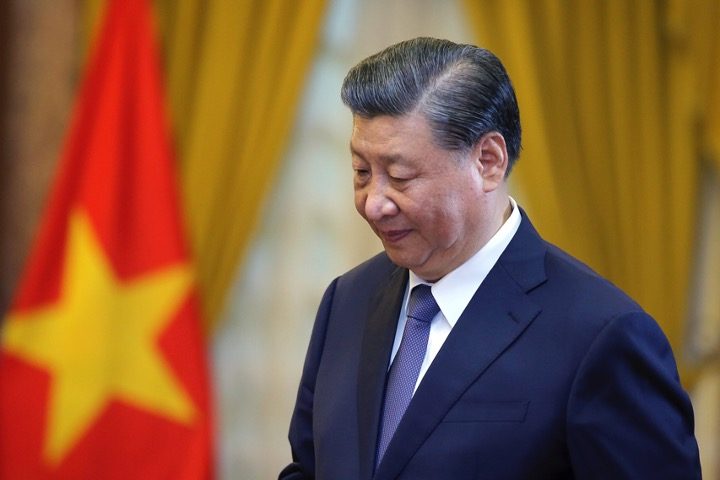
On December 12, the Pentagon announced that the United States has been in talks with Beijing to organize military-to-military discussions, though it failed to elaborate regarding the specifics of such talks.
Last month, U.S. President Joe Biden and Chinese leader Xi Jinping met in San Francisco before agreeing to resume bilateral military communications, which were cut off after then-U.S. House Speaker Nancy Pelosi visited self-governed Taiwan in August 2022. China regards Taiwan as a renegade province to be reunited with the mainland according to its “One China” principle. Thus, Beijing claims it reserves the right to use force should Taipei formally declare independence.
During the talks, Xi told his U.S. counterpart that Taiwan remained the most important and thorny issue in Sino-American relations.
Xi warned Washington against arming Taipei, and called on the United States to back the peaceful reunification of China, which he described as “unstoppable.”
The U.S. has officially acknowledged China’s sovereignty over Taiwan. Nonetheless, last year, Biden said Washington “would defend Taiwan in the event of a Chinese invasion.”
Recently, Pentagon spokesman Major General Patrick Ryder told a press conference that “we have been working closely with our defense attaché office and our policy team has been in active coordination with Beijing in order to arrange communication. But again nothing to announce at this time,” he elaborated regarding any specific engagements.
White House National Security Advisor Jake Sullivan said at a Wall Street Journal event the same day that he thought progress on military-to-military communication was going according to plan since the Biden-Xi summit only took place a few weeks ago.
“I actually don’t think of it as a delay. I think this is just the normal implementation of a summit outcome and it’s continuing as both sides expected it would so I see no issue there,” Sullivan said. “We believe that the real question is not: Will it get started? We’re confident in that. The real question is: Can it be sustained through any ups and downs that may come in the future,” he added.
The Biden administration has indicated that it wants communications throughout the two countries’ militaries, including both senior leaders and commanders in specific geographic areas.
Relations between the U.S. and China took a nosedive after Biden ordered the shooting down in February of a suspected Chinese spy balloon that flew over America.
In early December, Chinese Foreign Affairs Minister Wang Yi warned U.S. Secretary of State Antony Blinken during a phone call that Washington must not meddle in Beijing’s internal affairs. Wang and Blinken were discussing the future of Sino-American relations, the situation in the Middle East, and Taiwan.
Wang reiterated this stance during the phone call, and said the U.S. must not encourage any “Taiwan independence” forces, based on reports by China Central Television.
Previously, Chinese government spokesperson Chen Binhua had cautioned that “Taiwan independence means war.”
There was a sharp rise in Sino-American tensions in the region when the Biden administration authorized funding for the first-ever transfer of U.S. military equipment to Taiwan under the Foreign Military Financing grant, which is typically reserved for sovereign nations.
In 2022, the U.S. government passed the Taiwan Enhanced Resilience Act, which allocates up to $2 billion yearly in security assistance to Taipei from 2023 to 2027. The act also enables enhanced military training and collaboration with the U.S. Armed Forces. Taiwan has ordered more than $14 billion worth of U.S. military equipment as of this writing.
In November, a spokesman for the People’s Liberation Army said that the Chinese military chased away a U.S. warship near the disputed Xisha/Paracel Islands in the South China Sea.
The supposed violation of China’s territorial waters by the USS Hopper guided-missile destroyer “severely jeopardized” Beijing’s sovereignty, and once again showed that Washington was attempting “navigation hegemony” and “militarization” of the South China Sea, said the spokesman for the PLA’s Southern Theater Command, senior Colonel Tian Junli.
The Chinese military deployed “air and naval forces to follow and monitor” the intruder, and “drove it away according to law,” CGTN reported.
The Xisha islands are a contested archipelago in the South China Sea, which is de-facto governed by China. Known internationally as the Paracel Islands, they are also claimed by Vietnam and Taiwan. Washington does not acknowledge China’s claim of sovereignty over the islands and has repeatedly slammed it as “unlawful” and posing “a serious threat to the freedom of the seas.”
In May this year, an American spy plane flying in international airspace above the South China Sea also had a close encounter with a Chinese fighter jet, in what U.S. officials alleged was an “unprofessional intercept.”
A Chinese pilot carried out an “unnecessarily aggressive” maneuver, flying his J-16 fighter just in front of the nose of a U.S. RC-135 reconnaissance aircraft, the U.S. Indo-Pacific Command (INDOPACOM) claimed at that time. The command published a video clip of the incident, purporting to show the J-16 passing in front of the U.S. plane and causing the RC-135’s cockpit to jerk in the turbulence of its wake.
“The RC-135 was conducting safe and routine operations over the South China Sea in international airspace, in accordance with international law,” INDOPACOM said.
The statement elaborated that U.S. forces will still fly “with due regard for the safety of all vessels and aircraft under international law. We expect all countries in the Indo-Pacific region to use international airspace safely and in accordance with international law.”
Chinese officials did not immediately comment on the incident or the U.S. statement. Beijing has been riled at Washington’s claims over similar incidents in the past, accusing U.S. forces of provocations and violating China’s sovereignty. The Chinese Defense Ministry lambasted American officials for “pure slander and hype” over an incident last December in which a Chinese fighter jet again reportedly buzzed within six meters of a U.S. Air Force RC-135. Both sides blamed the near collision on the other.



